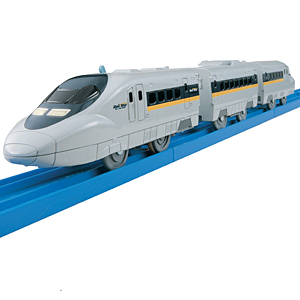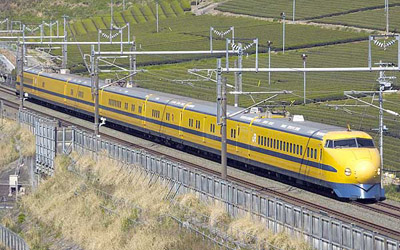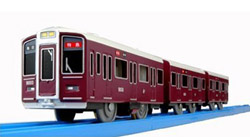We took the Hikari Rail Star to Fukuoka in 2006 to visit Yuki’s Great-Grandmother Tomoe-san. It’s nice to have another part of our history in our Plarail collection.

Hikari Rail Star Box
Name: Shinkansen 700 Series Hikari Rail Star
Takara Tomy Name: S-05 ライト付700系新幹線 ひかりレールスター
Power Source: 1xAA Alkaline Battery
Manufacturer Number: 4904810755784
Release Date: 2007-04-26
Features: Headlights, detachable cars
Service Type: Highspeed Passenger

Plarail Hikari Rail Star
In real life…
Source: http://en.wikipedia.org/wiki/Hikari_%28train%29
Hikari (which means Light) is the name of a high-speed train service running on the Tōkaidō and Sanyō Shinkansen “bullet train” lines in Japan. Slower than the Nozomi but faster than the Kodama, the Hikari is the fastest train service on the Tōkaidō and Sanyō Shinkansen that is covered in the Japan Rail Pass.














